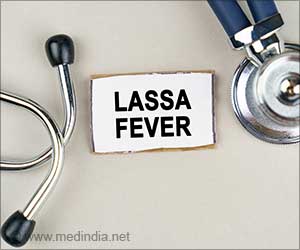Researchers have believed for ages that drug addiction was the outcome of the reward system and stress system, both being separate systems of the brain.

"If we can find a way to target those neurons in humans, maybe we can reduce the 'high' produced by the drug and reduce the withdrawal symptoms," said Olivier George, assistant professor at TSRI and senior author of the new study.
Mysterious Neurons
Until now, the area of the brain where these neurons are found, called the ventral tegmental area (VTA), had only been associated with the reward system--not stress from withdrawal. The neurons in the VTA were known to produce dopamine, a neurotransmitter linked to feelings of pleasure.
Five years ago, George was sure there had been a mistake when Taryn Grieder, a staff scientist in Derek van der Kooy's lab at the University of Toronto, who was collaborating with George on this project, detected a stress peptide in the VTA. This peptide, called corticotropin-releasing factor (CRF), is associated with anxiety and depression. Grieder, now first author of the new study, ran the test again and got the same weird result. She then ran a third test: same result.
George decided to take a closer look at the VTA and worked closely with Paul Sawchenko, professor at the Salk Institute who was part of the group that originally discovered CRF, to use radioactive RNA markers to detect CRF in brain samples from rodents.
Advertisement
They reminded George of pictures sent back from NASA's Hubble Space Telescope showing dots of light from unknown stars.
Advertisement
A New Framework
Following up on these unexpected findings, the researchers looked at the role of these neurons in nicotine addiction.
They studied brain samples from mice and rats that were raised with chronic exposure to nicotine and had developed nicotine dependence--similar to a heavy smoker going through two packs a day. They found that CRF-producing neurons in the VTA were activated during withdrawal, and they examined brain samples from humans, showing that the same CRF-producing VTA neurons are present.
The researchers also tested whether CRF production in the VTA was linked to escalation of nicotine intake in rodents that had withdrawn from the drug and then had nicotine access restored. Previous studies had shown that in rodents--and in humans--those who relapsed began consuming more nicotine than they did when first exposed to the drug. To test whether this behavior was linked to neurons in the VTA, the researchers targeted a gene in the neurons to decrease the production of CRF during withdrawal. They found that rodents with less CRF in the VTA did not escalate their nicotine intake during a second round of access to the drug.
Now that researchers have found a link between the reward and stress systems, George thinks of the systems working together as one "motivational" system. The "high" of dopamine motivates a person to keep smoking, and the stress of withdrawal motivates a person not to quit.
"That changes the whole conceptual framework," said George. "We have to look at everything again, going back to the 1970s. It's possible that when you activate those neurons, you have the reward system that's activated--you have this euphoria, this high--but at the same time you activate this stress peptide."
George hopes the recent study will help researchers develop drugs or genetic therapies to target these neurons. "It's a new road to finding treatments for people," he said.
Source-Eurekalert














